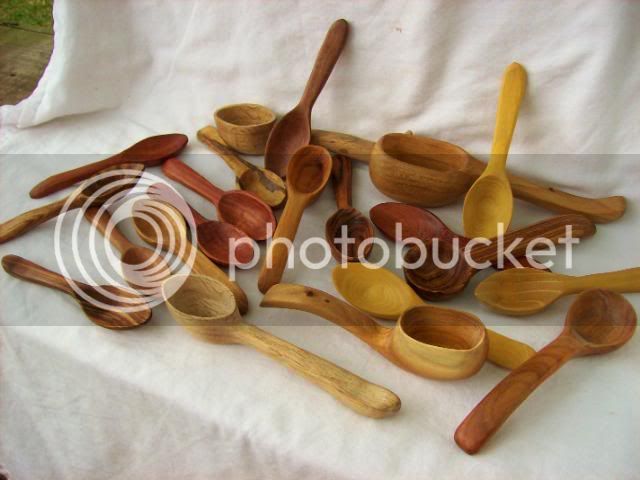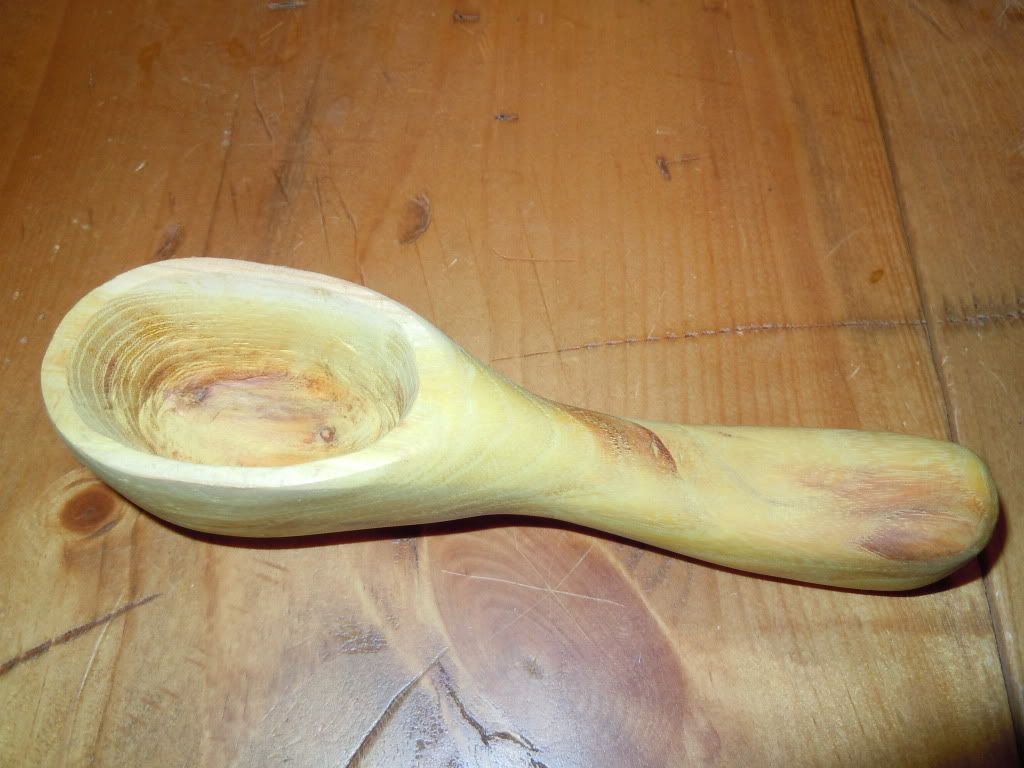Take the piece of wood your spoon is hiding in and use it as a template by placing on a piece of paper. Draw the wood’s shape on this sheet of paper. Draw your spoon’s shape inside that rectangle you just drew on the paper. If you can fit a couple (or more) spoon shapes on there, have at it. Once happy with the drawing of the spoon shape, cut it out, place on the piece of wood, and use the cut out shape as a template. Draw a line around it. A marker is used so my less-than-wonderful eyesight can see it. Use whatever kind of saw you have to cut out the blank. A scroll saw works great. So would a band saw. A coping saw does OK but it takes more time. Once the spoon blank is cut out give some thought to how you want the handle to look. You might consider drawing the handle on the side of the spoon blank so you can see how much wood has to be removed. You might be able to remove some of the excess wood with a saw. An X-Acto knife will take off a surprising amount of wood. Rasp it down to where you start thinking more in terms of sanding than rasping. A gouge chisel is used to remove excess wood from the bowl. Once all of the excess wood has been chiseled out it is time to start sanding. A Dremel tool considerably speeds things up, but be advised it will also hasten your mistakes. (Don’t ask me how I know) Sand the thing down to the shape you like. If you don’t like it, toss it away, and start another. Hey, it was a piece of scrap to begin with. Once you have the spoon shape where you want it, work the thing over with 0000 steel wool and call it finished.
Tools needed: Scrap piece of wood, pencil, paper, scissors, felt tip marker, a saw capable of small radius turns, gouges, slip stone for sharpening, smallish rasp, X-Acto knife, X-Acto blades, sanding drums for Dremel tool, sanding block, sand paper, 0000 steel wool.








